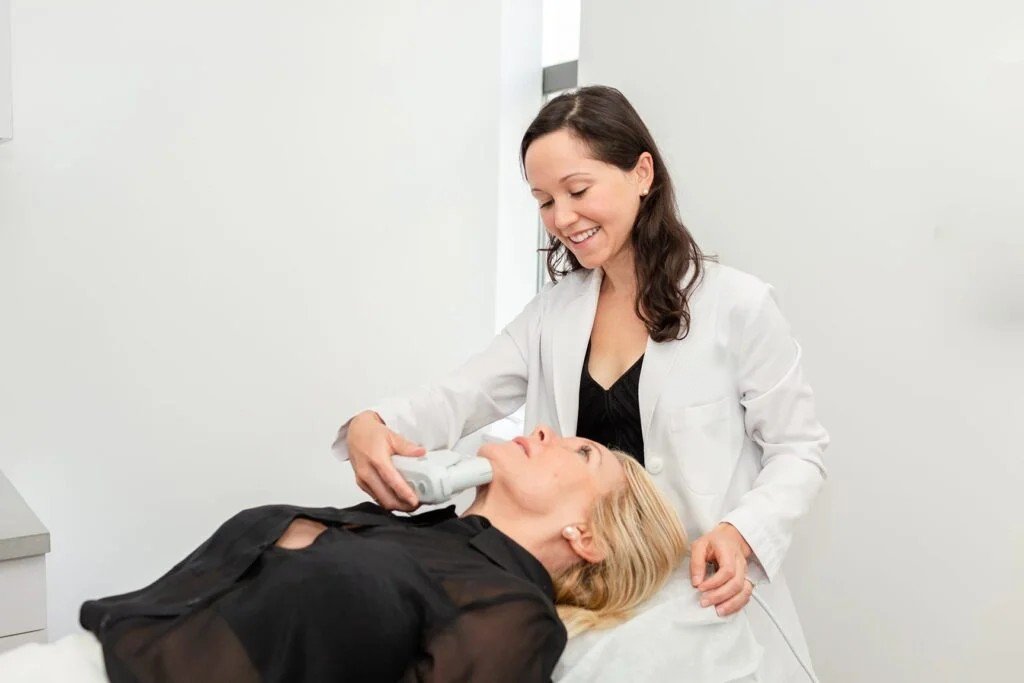
HOMEPAGE / MEDICAL DERMATOLOGY TREATMENTS / SKIN CANCER
SKIN CANCER
PROTECT YOUR SKIN
TYPES OF SKIN CANCER
Basal Cell Carcinoma is the most common type of skin cancer in fair individuals. It is usually found on the head and neck but may occur anywhere. Basal Cell Carcinomas rarely metastasize (spread) but may cause damage to tissue as they grow.
Squamous Cell Carcinomas are primarily found in fair individuals but are also the most common type of skin cancer in skin of color. Typically, they are located on the head and neck in light-skinned people and on the leg in darker skin types. Patients with actinic keratoses are at a higher risk of developing squamous cell carcinomas. Because squamous cell carcinomas have greater potential to metastasize than basal cell carcinomas, early treatment is necessary.
Malignant Melanoma is a cancer of melanocytes, the pigment-producing cells of the body, and is the most deadly type of skin cancer. Melanomas are usually pigmented and appear as irregularly bordered, asymmetric moles with mixed colors. Fair-skinned individuals are at higher risk, but patients with dark skin are not entirely protected.
SKIN CANCER SELF-CHECK
During self-examinations, suspicious moles can be recognized using the ABCDEs of melanoma:
- A is for asymmetry, meaning a mole is not the same on one side as the other
- B is for border irregularity, which refers to a border that is not straight
- C is for color variation, meaning more than one color in the same mole
- D is for diameter greater than 6mm, roughly the size of a pencil head eraser
- E, perhaps the most important, stands for evolution – a changing mole is a cause for concern.


For all types of skin cancer, prompt detection is the key to good outcomes. The cure rate for basal cell carcinomas and squamous cell carcinomas found and treated early approaches 95%. For melanomas, identification of lesions while they are still thin offers the best chance of cure. All patients should conduct periodic self-examinations of their own skin and should have a professional complete a skin physical at least once a year. Any suspicious lesion, especially ones that do not heal, grow, bleed spontaneously or change should be brought to the attention of a dermatologist. We also screen for actinic keratosis and offer photodynamic therapy for pre-cancerous growths.
To learn more about skin cancer, visit aad.org.
SCHEDULE YOUR SKIN CANCER SCREENING ONLINE
To learn more about skin cancer screenings and treatment options, contact Vital Dermatology NJ in Parsippany NJ, to schedule a consultation. You can also schedule an appointment online here.
NEXT, READ ABOUT

ACTINIC KERATOSIS
Actinic keratoses are precancerous skin lesions that may progress into squamous cell carcinomas. They usually occur in fair-skinned individuals after years of sun exposure.

PHOTODYNAMIC THERAPY
Photodynamic therapy (PDT) is a procedure that uses a photosensitizing drug (Levulan Kerastick™ – aminolevulinic acid HCl) to apply light therapy selectively to target precancerous lesions, acne and sun damage.

SUN DAMAGE
Repeated and prolonged exposure to the sun results in sun damage. Skin damaged by the ultraviolet rays of the sun appears mottled, with uneven pigmentation and redness from dilated blood vessels.
